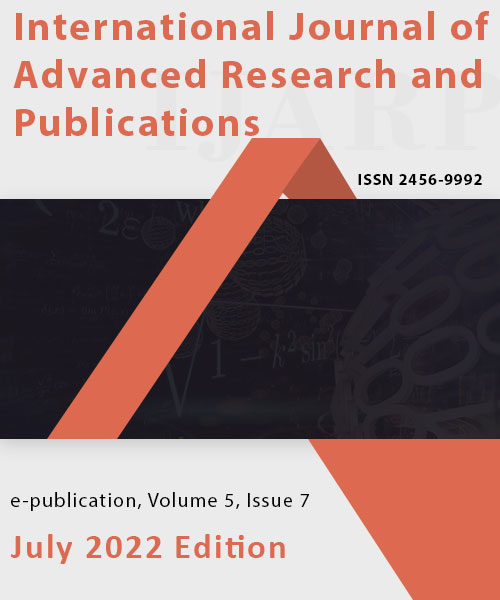Bullet Id: A Virtual Bullet Identification For Forensic Ballistics Students
 Volume 5 - Issue 7, July 2022 Edition
Volume 5 - Issue 7, July 2022 Edition
[Download Full Paper]
Author(s)
Geraldo P. Roxas
Keywords
Bullet, Identification, System, Mobile, Application
Abstract
Forensic science educators have long argued for the use of more innovative approaches in forensic teaching. The lockdown has forced individuals and departments to embrace these views with speed. In this regard, the researcher would want to designed and develop the bullet ID system for forensic ballistics students. This study will be conducted using the Agile Software Development Methodology. According to Stackify (2017), Agile Methodology is an approach that is people-focused, results-focused to software. It involves planning, self-organization, and short delivery times. It’s flexible, fast, and aims for continuous improvements in quality. It abandons the risk of spending months or years on a process that ultimately fails because of some small mistake in an early phase. It relies instead on trusting employees and teams to work directly with customers to understand the goals and provide solutions in a fast and incremental way. The Bullet ID is a promising educational tool that will help both the instructors and students in their learning activities specially in the field of forensic ballistics. This new learning technology will bridge the gap between face-to-face and online classes.
References
[1]. Sintema, E. J. (2020 April 7). Effect of COVID-19 on the performance of grade 12 students: Implications for STEM education. EURASIA Journal of Mathematics, Science and Technology Education, 16(7). https://doi.org/10.29333/ejmste/7893
[2]. Kuensel. (2020, March 6). First confirmed coronavirus case in Bhutan. Kuensel. https://kuenselonline.com/first-confirmed-coronavirus-case-in-bhutan/
[3]. Palden, T. (2020, August 12). Women test COVID-19 positive after five tests locking down entire country. Kuensel, pp. 1–2.
[4]. Dhawan, S. (2020). Online learning: A panacea in the time of COVID-19 crises. Journal of Educational Technology, 49(1), 5–22. https://doi.org/10.1177/0047239520934018
[5]. Pokhrel, S., & Chhetri, R. (2021). A Literature Review on Impact of COVID-19 Pandemic on Teaching and Learning. Higher Education for the Future, 8(1), 133–141. https://doi.org/10.1177/2347631120983481
[6]. Hackathorn Jana, Solomon Erin, Tennial Rachel, Garczynski Amy, Votaw Katheryn. From teaching to assessment: benefits of active lecture cues. Pract. Evid. Scholarship of Teaching and Learning in Higher Education. 2012;70:47–62
[7]. RGUHS Offers Learning App for Medical Students Amid Coronavirus Lockdown. (19th April 2020) Medical dialogues. Available from: https://medicaldialogues.in/news/education/medical-universities/rguhs-offers-learning-app-for-medical-students-amid-coronavirus-lockdown-64893?infinitescroll=1.
[8]. Wenjun C., Ziwei F., Guoqiang H., Mei H., Xinrong X., Jiaxin D., Jianzhong Z. The psychological impact of the COVID-19 epidemic on college students in China. Psychiatry Res. 2020:287. doi: 10.1016/j.psychres.2020.112934
[9]. Mayne R., Green H. 2020. Virtual Reality for Teaching and Learning in Crime Scene Investigation. Preprints 2020040434
[10]. Baticulon, R. E., Alberto, N. R., Baron, M. B., Mabulay, R. E., Rizada, L. G., Sy, J. J., Tiu, C. J., Clarion, C. A. & Reyes, J. C. (2020). Barriers to online learning in the time of COVID-19: A national survey of medical students in the Philippines. medRxiv. https://doi.org/10.1101/2020.07.16.20155747
[11]. Santos, A. P. (2020, October 6). In the Philippines, distance learning reveals the digital divide. Retrieved From https://eu.boell.org/en/2020/10/06/philippines-distance-learning-reveals-digital-divid